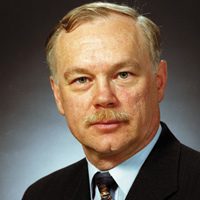Does the term GIS mean anything at all?

 I have recently been reading a series of national and state GIS articles and user needs documents, all of which talk about the need for a National GIS or a State GIS, and the importance of GIS data, without ever stating in any way what a GIS is, or what GIS data might include.
I have recently been reading a series of national and state GIS articles and user needs documents, all of which talk about the need for a National GIS or a State GIS, and the importance of GIS data, without ever stating in any way what a GIS is, or what GIS data might include.
While some real requirements are touched on, such as the importance of cross department information integration and information currency, and the need for decision support tools, most of the conversation focused on GIS, without stating clear specific business needs. It would seem that the technology tail was clearly shaking the state management dog.
One might think that this was an isolated incident, however, I have recently seen too many articles of this type emanating from a broad spectrum of experts and nationalities. Why might this be the case?
Knowledge of the World
I think part of the problem is the confusion of GIS and GIS data with knowledge of the world around us. Clearly to plan and interact with the world we need to understand it, whether we are talking about environmental degradation, national security, or neighborhood planning. Furthermore, it should be obvious that the distribution of quantities and entities in space is a key component of that knowledge, and this has been known long before even the advent of computers.
Knowledge of the world is critical, and it inherently involves a wide range of kinds of information; measurements and observations both in-situ and remote, engineering analyses and drawings for built structures and natural “features”, demographics for persons, wildlife, and plants, and knowledge of the behaviour of natural and man-made physical systems. Knowledge of the world is clearly much more than whatever GIS data might mean, and involves the integration of a wide range of technologies and information types.
Integration Approach – Enterprise Information Systems
Many of these articles also talk about a “GIS Approach”, again without definition of what GIS means or what such an approach might entail. Presumably, this has to do with taking into account the distribution of things and quantities, something that has been done for a very long time, and should form a component of all planning, analysis and development activities. It should not be segmented out into some separate category of activity. The “approach” to problems should be driven by the character of the problem(s), and by evaluation of the tools and policies that might be available to deal with it.
As a technology platform, GIS is even less well defined. Does it include real time data acquisition? Is it a SCADA system? Does it provide real time process flow diagrams? Does it perform image analysis? Does it encompass the structural engineering or architectural design of structures? Is it a system for finite element analysis? Can it perform numerical modeling of airflows over buildings? What about water flows in storm sewers? Can it predict damage to structures by floods or earthquakes? Does it handle documents about gas well production?
No you will say, but it plays a role in managing this “kind” of information, and thus begging the question as to what GIS data means. Furthermore it offers no insight as to how GIS enables information integration, nor how such integration is to be maintained as the source data changes.
If we are to create, maintain and effectively use knowledge about the world, it is clear that such information must be sourced from many organizations, and involve a rich variety of information types. Enterprise Information Management technologies that can deal with such a rich variety, offer powerful information modelling capabilities, and which provide automated mechanisms for wide area data synchronization seem a more valid starting point than nebulous GIS. Let’s focus on business needs and not create yet another technology driven information silo. Of course, that includes geospatial.
About Ron Lake
Ron Lake, chairman and CEO of Galdos Systems Inc., is a founding member of the Open Geospatial Consortium, and author of “Geography Markup Language – Foundation of the GeoWeb”. He has been recognized for his work in creating GML and promoting its standardization on a global level. Mr. Lake plays a significant role in shaping the international conversation regarding the global integration of data and systems dealing with the physical world. He is an internationally recognized speaker in the field of Geographic Information Systems and geospatial interoperability, and he writes and speaks regularly on the topic of advanced spatial information systems.


